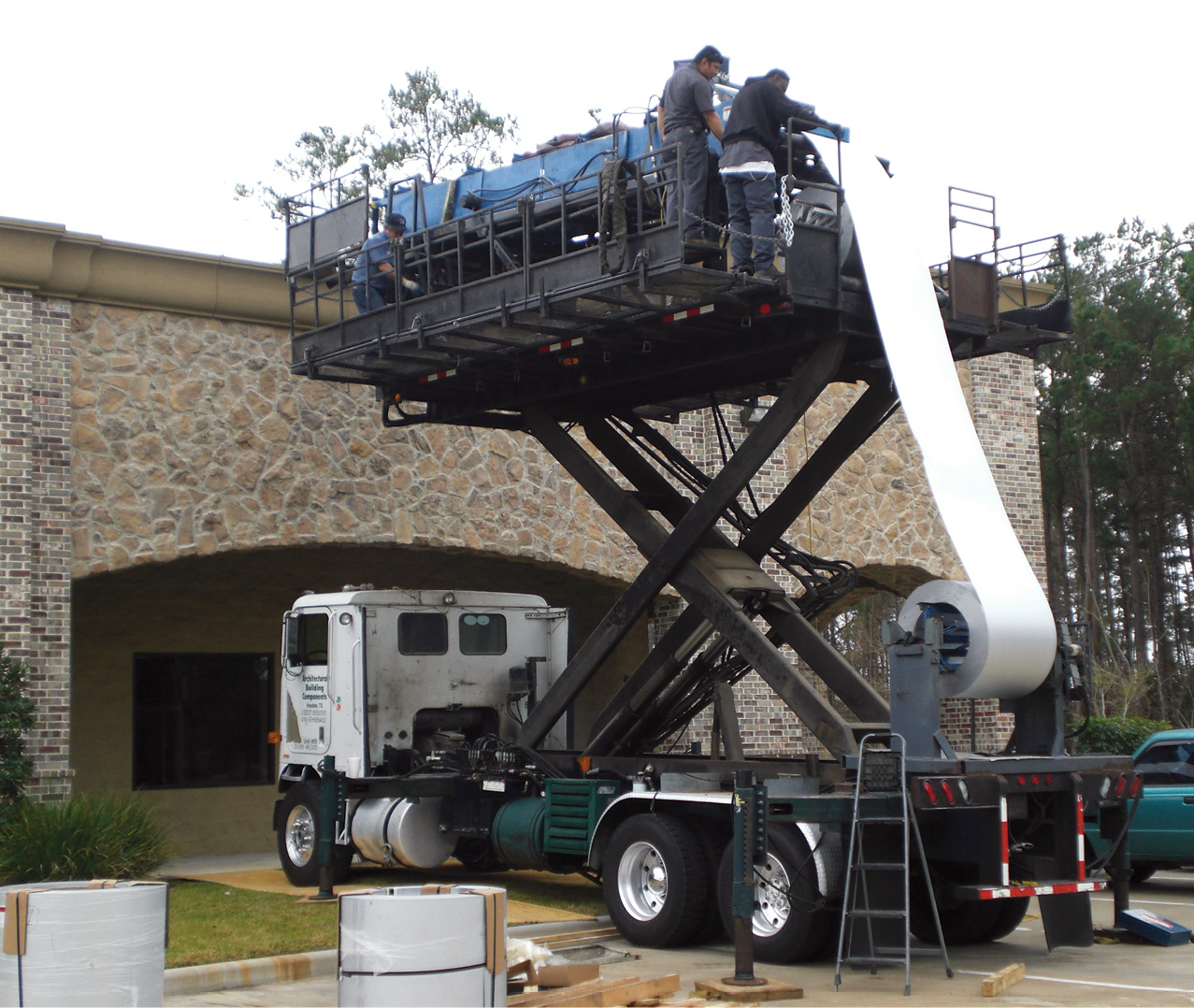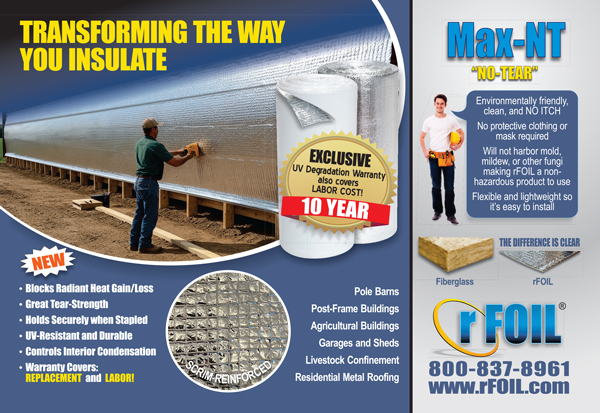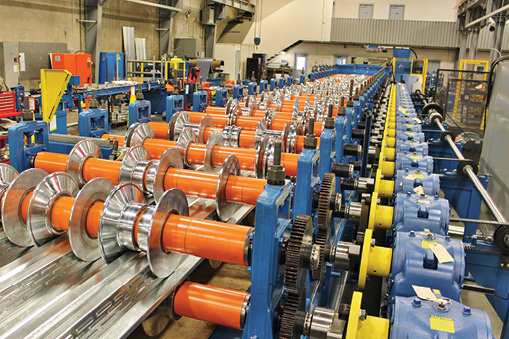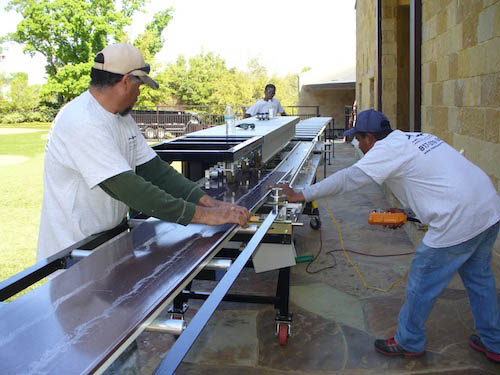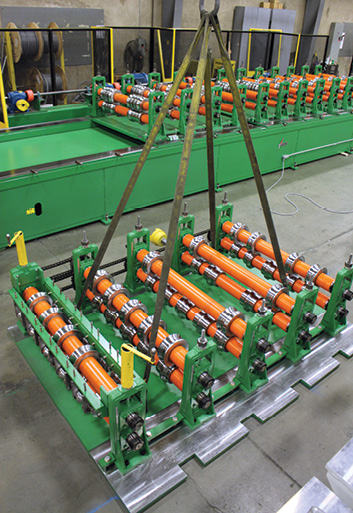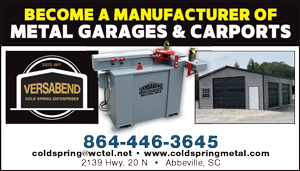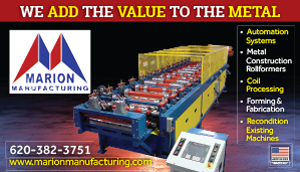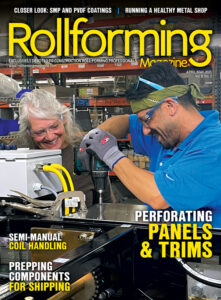By Sharon Thatcher
The explosive growth of regional metal roll forming businesses in the United States coupled with an influx of foreign raw material has had a significant impact on established companies that once exclusively supplied wall and roof panels for the metal construction industry. How are leading manufacturers competing in this tumultuous climate?
Identifying The Competition
Globally, for example, Australia, Europe, Canada, the steel mill is very much determining the specifications of coil stock. The steel mill controls the complete process. They typically specify the gauge and substrate right down to the paint systems and color palette. For example, where they offer a palette of 25 or 30 colors, they are the primary supplier in those markets, so those colors are the colors offered in the marketplace.
The issue of the influx of foreign raw material is complex but one important facet is the issue of how steel is made and governed elsewhere in the world as compared to the United States.
In the U.S. market place, the OEM manufacturers determine what their specifications are: paint systems, colors, gauges and substrates, so it brings variability into the supply chain.
That variability sometimes brings confusion to the marketplace, making it difficult for the consumer to determine which product will provide the maximum performance and longevity. With so many players in the game, price becomes a main selling point, while quality can vary widely.
Regional Roll-Forming Competition Changing The Industry
In the United States, historically, a number of companies have taken the steel coil and fabricated their own products, then sold them through distributors who then sell to the builders.
About 20 years ago, regional roll-forming businesses began to spring up in the south, cutting out the distributors and going direct to the builders. The proliferation of those smaller guys during the past 10 years as they spread north, east and west, has made a major impact on the industry. Cutting out the middleman has lowered prices on end product, but has also challenged the old model of distribution.
Ken Gieseke, vice president of marketing at McElroy Metal, has also been on the front lines of the change. McElroy is headquartered in the south in Bossier City, Louisiana, in the region where the trend for regional roll formers began.
“The barriers to entry are not real high,” Gieseke said of the smaller start-ups. More and more affordable machines have made it possible and lower price points for the end roof and wall products have made it attractive to companies.
“I can’t paint a broad brush,” Gieseke said. “Like any industry, when you have so many manufacturers supplying products, you’re going to have some that don’t do it well or cut corners on quality. I would argue this point even against some of the larger national competitors.”
What bothers some manufacturers, are those larger, established companies that have faced this newer competition of regional roll formers by lowering the quality of their own products and are now making a product less durable than some of their best regional competitors.
Caught in between is the consumer who must be self-educated about what is needed vs. what he or she is really buying.
Separating Themselves From The Competition
Proprietary products are naturally something that companies use to separate themselves from the competition.
McElroy has a team of engineers tasked with developing new ideas and improving established products. They can argue that their products are based on real science.
The paint system is important.
McElroy uses a top-of-the-line PVDF paint system. “That’s a paint system that’s been used for decades on commercial and architectural projects,” said Gieseke. “And it’s our belief that PVDF paint systems should be just as important to post-frame buildings and residential roofs … so we’ve made that our standard offering on all of our products.”
Another factor heavily emphasized by McElroy is the thickness of their metal, the thickness and quality of the coatings, and the transparency in providing that information to the customer.
Inventory
Part of the affordability of small roll formers comes from the fact that they don’t have the overhead of inventory. Gieseke spins that in another direction, contending that the lack of inventory can mean a slow-down in the overall process when special orders are necessary, or even worse, the use of lower- or inconsistent-quality products.
One area in particular where unproven roll formers may not be properly prepared, Gieseke noted, is in the inventory of trim vs. panel coil.
“There are different tensile strengths and we use a different tensile strength for trim coil than we do for panel coil,” Gieseke said. “The panel coil is typically harder and if you make trim out of it, cracks will often develop creating an opportunity for corrosion and premature failure. A lot of people don’t invest in the inventories. We think it’s important to have trim coil that’s softer, that will be used specifically for trim and not one that’s a combination.”
Let The Buyer Beware
Savvy builders want to know they are buying quality roof and wall panel that will provide their customers with longevity, and they are learning to ask the necessary questions ahead of purchase. Roll formers unwilling or unable to provide answers are not likely to stay in business for the long haul.
Gieseke said that too many roll formers, and even distributors and contractors, are not upfront about what their substrate coating is. “They’re basically selling painted metal with a long-life warranty,” he said. “In our case we always tell people the exact substrate and coating they are buying. We always encourage all our customers, and any end users, to make sure whoever is going to install their building, ask them what their coating is, ask them what their substrate is. If they won’t tell, or don’t know, that could be a red flag. They should always know those important components of a metal panel.”
Being able to determine quality based on looks is difficult. Here are some important points to keep in mind:
• The thickness of the metal does not determine the performance against corrosion. Pre-treatments, coatings and paint are what allow metal to perform against corrosion.
• Thinner metals can lead more easily to oil canning, waviness at overlap areas, and over-drilling of screws into the metal. The latter can lead to dimples and the early degradation of the paint.
• Instead of concentrating on gauge, learn to understand the importance of thickness and weight, not only of the metal, but of the coatings. What is the true base-metal thickness? What does this weigh per lineal foot? What types of metallic coatings, pre-treatments and topcoats are being used and how substantially are they applied?
Aside from all that, and not even covered here, are issues of roll-forming equipment and whether or not your panel is being roll formed properly.
It’s a dizzying array of things to remember, but a panel’s life is only as good as the weakest point, so wherever you cut it, scratch it, roll form it, penetrate it, that’s where the panel is going to break down first.
When it does break down, your business’s reputation may go with it. RF
Originally Published as “Rolling With The Competition” Fall 2018 issue Rollforming Magazine.


